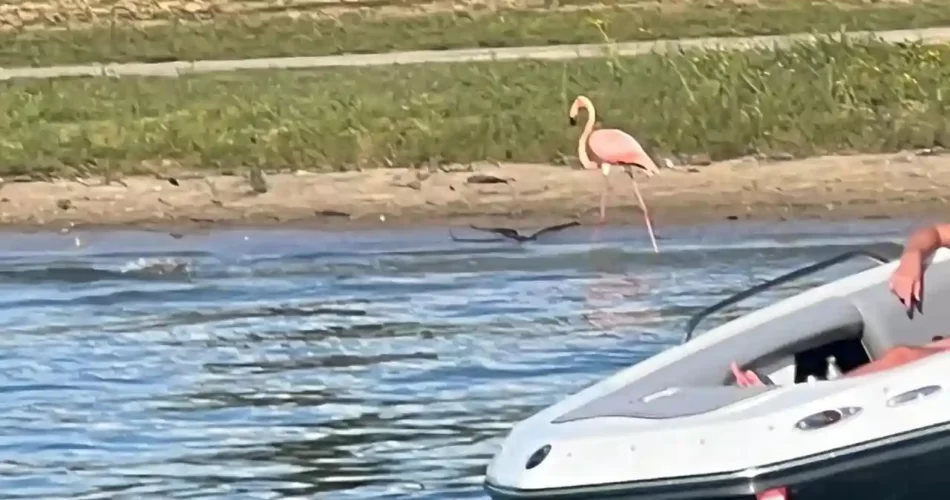When you think of flamingos, the images that come to mind are likely to be of African waterholes, the Caribbean, Florida or just about anywhere other than Waynesville, Ohio.
So when Jacob Roalef saw Facebook posts about flamingos at Ceasar Creek State Park near Dayton last week, he rushed to see them for himself.
“I quickly grabbed my gear, told my wife and headed out the door,” Roalef, who leads birding tours, told GLM.
When he got there, he saw two birds, an adult and a juvenile, on the lake.
“The flamingos were just hanging out and sleeping in about a foot of water near the shore,” Roalef said. “They would wake up and drink some water or look up if they heard a seagull flying by.”
He said the birds stayed there until about 6 p.m., when a dog shooed them away.
Jerry Lorenz, state director of research for Audubon Florida, says that since Hurricane Idalia passed, they’ve received reports of flamingos from all over Florida, as well as from Georgia, the Carolinas, Texas, Kentucky and many other places, and the sightings keep coming in.
She speculates that the birds were flying between Cuba and the Yucatan and were diverted by hurricane.
“It’s really amazing that if you follow the path of Idalia, (the sightings) really fall north and south of that center track,” he said.
Lorenz said they are still reviewing the data, so he doesn’t know how many birds flew north because of the hurricane, but it’s a lot more than usual.
“We’ve never seen anything like this,” Lorenz said. “We’ll have one or two flamingos after tropical storms (but) this is unprecedented.”
The ship’s captain, Vinnie Fugett, spotted a group of 17 flamingos walking among the waves and eating on the beach at Treasure Island near St. Petersburg, Florida.
The birds finished eating and flew off into the sunset.
“I’ve never seen a flamingo here after living here all my life,” Fugett said.
Lorenz urged people to give the flamingos plenty of space because they’ve been through so much.
“These birds are stressed right now. They just went through a terrible experience, no matter how you look at it,” he said. “So don’t get close enough to scare them or anything, but enjoy their presence.”
Flamingos are native to Florida, but were hunted to near extinction in the early 20th century for their beautiful feathers, which were used in hats and other clothing.
The population has been growing worldwide, but it was believed that most of Florida’s flamingos descended from birds that escaped from various animal attractions.
Recently, scientists have seen flamingos that have flown here from Cuba, the Yucatan and the Bahamas.
Lorenz said flamingos are capable of flying thousands of miles over open water, so the Ohio birds should have no trouble flying home when it’s too cold for them.
He has been working with a group of experts to restore the Everglades and Florida Keys and create suitable habitats where flamingos can thrive.
“Maybe these birds will become more comfortable and we’ll have a population again, and people will be able to come to South Florida and the Florida Keys and see flamingos in the wild,” he said.

